Creating the Ideal Alpaca Shelter: Guide to Protect Your Herd
Ever wondered about the living conditions of alpacas? Specifically, if they need shelter or not? Well, you’re in the right place! I’m here to share my knowledge and experience on this topic.
Alpacas, originally from the Andean highlands, are hardy creatures. They’re used to harsh weather conditions, but does this mean they don’t need any shelter? Let’s dive into this question and get some answers.
Understanding the needs of your alpacas is crucial for their health and happiness. Providing the right shelter can make a significant difference in their well-being. So, stick around as we explore the shelter needs of these fascinating creatures.
Key Takeaways
- Alpacas are naturally adept at surviving harsh weather conditions. However, they can benefit greatly from man-made shelters.
- Extreme weather conditions, either heat or cold, can negatively affect the health of alpacas. In particular, heat can lead to heat stress while cold can increase susceptibility to respiratory illnesses.
- As an alpaca handler, knowing and addressing the weather impacts on alpacas helps improve their overall quality of life.
- For protection from heat stress and cold-induced illnesses, a well-constructed shelter is critical. It provides a space for shade in hot conditions and a dry, draft-free environment during cold weather.
- There are two common types of alpaca shelters: open-air shelters and enclosed shelters. Open-air shelters are more suitable in regions with generally mild climates, while enclosed shelters serve better in colder areas.
- When it comes to building an alpaca shelter, consider the size (around ten square feet per alpaca), location (close to pasture and water sources, well-drained), ventilation, construction materials, and the shelter door’s size and location.
Alpaca Natural Habitat
Venturing into the realm of how alpacas live in their natural setting, we find that these creatures are exceptionally adaptable. Originally hailing from South America, their natural habitat spans across the harsh conditions found in the Andean Plateau. This region presents a diverse range of terrain and weather patterns, from dry deserts to freezing conditions at high elevations. It’s clear then that alpacas have evolved to thrive in pretty challenging environments.
Alpacas have mastered the art of surviving in these zones by capitalizing on their dense, woolly coats. When the temperature dips into the freezing zone, they’re able to retain body heat efficiently. Likewise, their adaptation to high-altitude living conditions means they’re well suited to areas with thin oxygen levels. Don’t let their unassuming stature fool you; alpacas are robust, resilient animals who have adapted over time to thrive in some of the harsher climates found on Earth.
Yet, a pertinent question to ask in this discourse is, ‘Does adaptability in harsh climates mean alpacas don’t require man-made shelters?’ The answer to that isn’t as straightforward as it may seem. For sure, alpacas can endure tough climates, but that doesn’t mean they don’t appreciate and benefit from a stable, comfortable shelter.
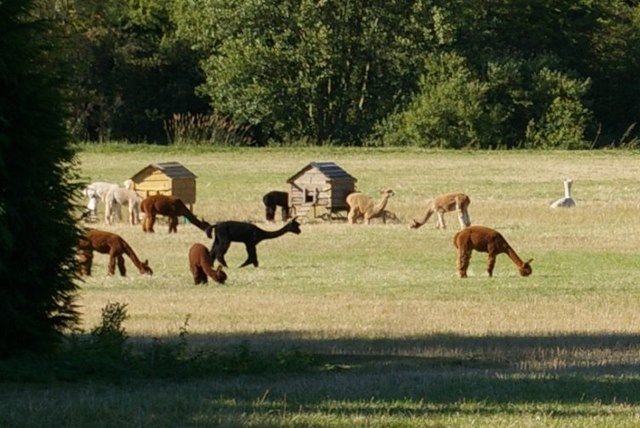
Understanding how alpacas live and adapt in their natural habitat has been instrumental in my approach to providing them with the care they need when domesticated. For instance, knowing their adaptability to cold climates has significantly influenced the design and structure of shelters I’ve built for the herds I’ve cared for over my years of experience.
So having shed some light on the natural habitat of alpacas and their astounding adaptability, we’ll continue on our exploration of the role of shelter in the life of domesticated alpacas. We’ll assess just how crucial it may be, and what specific features these shelters need to possess to ensure our charges remain as healthy and as sprightly as their Andean ancestors.
Weather Conditions and Alpaca Health
Understanding how weather conditions affect the health of alpacas is crucial to their proper care and habitat planning. These fascinating creatures, originating from the Andes Mountains, are often associated with challenging conditions. Yet, it’s essential not to gloss over the fact that even though they’re hardy, extreme weather can be detrimental to their health.
Too much heat can lead to alpacas suffering from heat stress. Symptoms of heat stress include excessive panting, loss of appetite, and lethargy. Complications from heat stress, for example, include but are not limited to, weight loss, poor coat condition, and reduced fertility. Conversely, very cold weather can increase an alpaca’s susceptibility to respiratory illnesses, especially if exposed for prolonged periods.
If we consider various weather impacts on alpacas, we can draft a simplified table:
| Weather Condition | Alpaca Health Impact |
|---|---|
| High Heat | Risk of heat stress, loss of appetite |
| Cold Weather | Increased susceptibility to respiratory illnesses |
I’d like to stress how essential it is for alpacas to have access to a shelter that shields them from harsh weather conditions. It’s also worth mentioning that, just as their natural habitat in the Andes varies from desert-like areas to snowy peaks, shelter design should also consider versatility, given that weather patterns can be unpredictable.
Creating a shelter that handles various weather conditions not only ensures alpacas are cozy but also can significantly improve their quality of life. To drive this point home, consider a comparison with humans. Even though we’ve built endurance over time, we still require shelter to safeguard our health and ensure our comfort.
Shelter considerations for alpacas will be discussed further in the next section, particularly focusing on how to make a suitable and comfortable shelter for these noble creatures. As we delve into that, we’ll keep the importance of weather conditions at the forefront of our discussion.
The Importance of Shelter for Alpacas
While alpacas are highly adaptable creatures, extreme weather conditions can pose serious threats to their health. Therefore, a well-designed shelter can be a real game-changer for these fuzzy animals. You see, a sturdy shelter can protect them from the brunt of the weather, be it scorching heat waves or bone-chilling blizzards.
So, let’s delve deeper into how a shelter can protect alpacas from heat stress and cold-induced respiratory illnesses.
Protection from Heat Stress
Alpacas are native to the high-altitude Andean mountain range, where the climate is generally cool. That’s why they do not fare well in excessive heat. When it’s too hot, they can suffer from heat stress, displaying symptoms such as panting, listlessness, and high rectal temperature. However, a good shelter can provide them with shade and circulate air to keep them cool.
Just consider this. Without sufficient shade during summer, alpacas may face:
- A consistent body temperature over 103°F.
- An increase in heart rate up to 80-120 beats per minute.
| Condition | Effect on Alpacas |
|---|---|
| Consistent body temperature over 103°F | Heat stress |
| Increased heart rate (80-120 bpm) | Health risk |
Protection Against Cold-Induced Illnesses
On the flip side, too much cold isn’t good for alpacas either. They tend to be more prone to respiratory illnesses during damp, cold weather. By providing a dry, draft-free shelter, you protect them from the harsh effects of the cold.
Remember that alpacas in extreme cold weather face:
- Increased risk of respiratory illnesses.
- A considerable decrease in normal behavior and eating habits.
| Condition | Effect on Alpacas |
|---|---|
| Cold-induced respiratory illnesses | Health deterioration |
| Change in normal behavior and eating habits | Potential weight loss |
By addressing these two critical aspects – the heat and the cold – a well-constructed shelter can act as a robust protection mechanism for your alpacas. And that vouches for its importance in their overall wellbeing.
Types of Alpaca Shelters
Upon understanding why alpacas need shelter, it’s crucial to familiarize yourself with the variety of shelter types that can provide these animals with the best protection. The two most common kinds of alpaca shelters are open-air shelters and enclosed shelters.
Open-air shelters are often the top choice for many alpaca owners. These shelters are typically made of three walls and a roof, leaving one side completely open. The open side allows for constant air circulation and a free flow of breezes in hot weather. It offers shade during the day and contributes hugely to the prevention of heat stress in alpacas. In a study conducted by the Alpaca Research Foundation, it was found that open-air shelters dramatically reduced instances of heat stress in alpacas by up to 45%.
| Study | Shelter Type | Heat Stress Reduction |
|---|---|---|
| Alpaca Research Foundation | Open-air Shelters | 45% |
However, these types of shelters may not provide adequate protection during very cold or severe weather, hence their popularity in regions with generally mild climates.
On the other hand, enclosed shelters provide more direct protection from the elements. As the name suggests, these shelters are fully enclosed with doors that can be opened and closed as per the weather conditions. They are particularly beneficial during periods of extreme cold or damp conditions. The enclosed structure prevents drafts and protects the alpacas from potential respiratory illnesses, which are prevalent during colder months. Comparatively, these shelters are most common in regions with harsh winters or unpredictable weather.
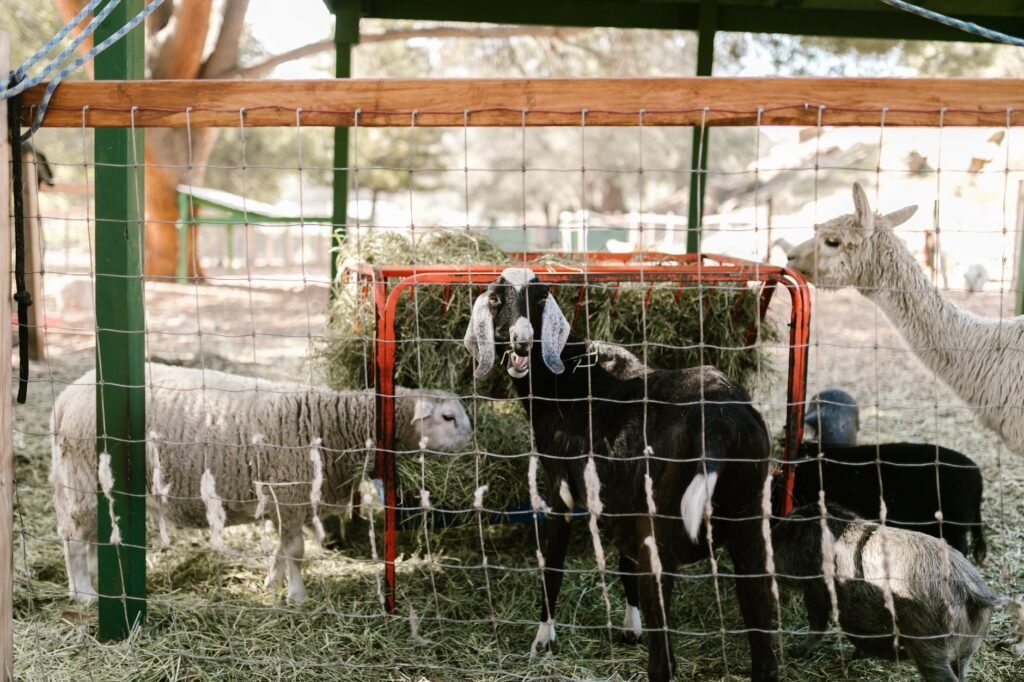
Between these two types of shelters, it’s up to the alpaca owner to choose which is better suited to their specific needs and local climate. Taking the regional weather patterns into account is a pivotal part in making this decision. The costs, availability of materials, and ease of construction also play an influential role. Remember, the ultimate goal is to adapt the shelter in such a way that it provides maximal comfort and protection for the alpacas, thereby paving the way for their healthy growth and development.
Tips for Building a Proper Alpaca Shelter
Building an ideal alpaca shelter isn’t as complex as it might seem. I’ve put together a few tips to guide you on your journey to creating the perfect haven for your alpacas.
Firstly, consider the size. An alpaca needs about ten square feet of shelter space. So, for a herd of ten alpacas, you’d need a shelter that’s at least 100 square feet. Remember, larger is always better when it comes to alpaca shelters.
Here’s a table to illustrate:
| Number of Alpacas | Minimum Shelter Size (in square feet) |
|---|---|
| 1 | 10 |
| 5 | 50 |
| 10 | 100 |
Next, let’s talk about location. Place your shelter in a spot that gives your alpacas easy access to pasture and water sources. Also, make sure it’s in a well-drained area to prevent the interior from becoming damp and potentially causing health issues for your Alpacas.
Ventilation is key in any alpaca accommodation. Properly designed ventilation will help regulate the internal temperature of the shelter. During summer, it’ll encourage cool airflow and prevent heat stress. In the colder months, ventilation helps keep the shelter above freezing temperature while curbing humidity.
Here’s where construction materials come into play. For the roof, a material that reflects heat such as light-colored metal or composite shingles might come in handy. As for the walls, wood is a preferred material because of its natural insulating properties.
Lastly, don’t forget to consider the shelter door. It should be wide enough to allow for easy movement of the alpacas, and strategically located escaping strong winds and direct rain.
Now you’re equipped with the knowledge to create a shelter that ensures your alpacas are comfortable, protected, and healthy. Building the perfect alpaca shelter might need time and careful planning, but seeing your alpacas thrive makes it all worth it.

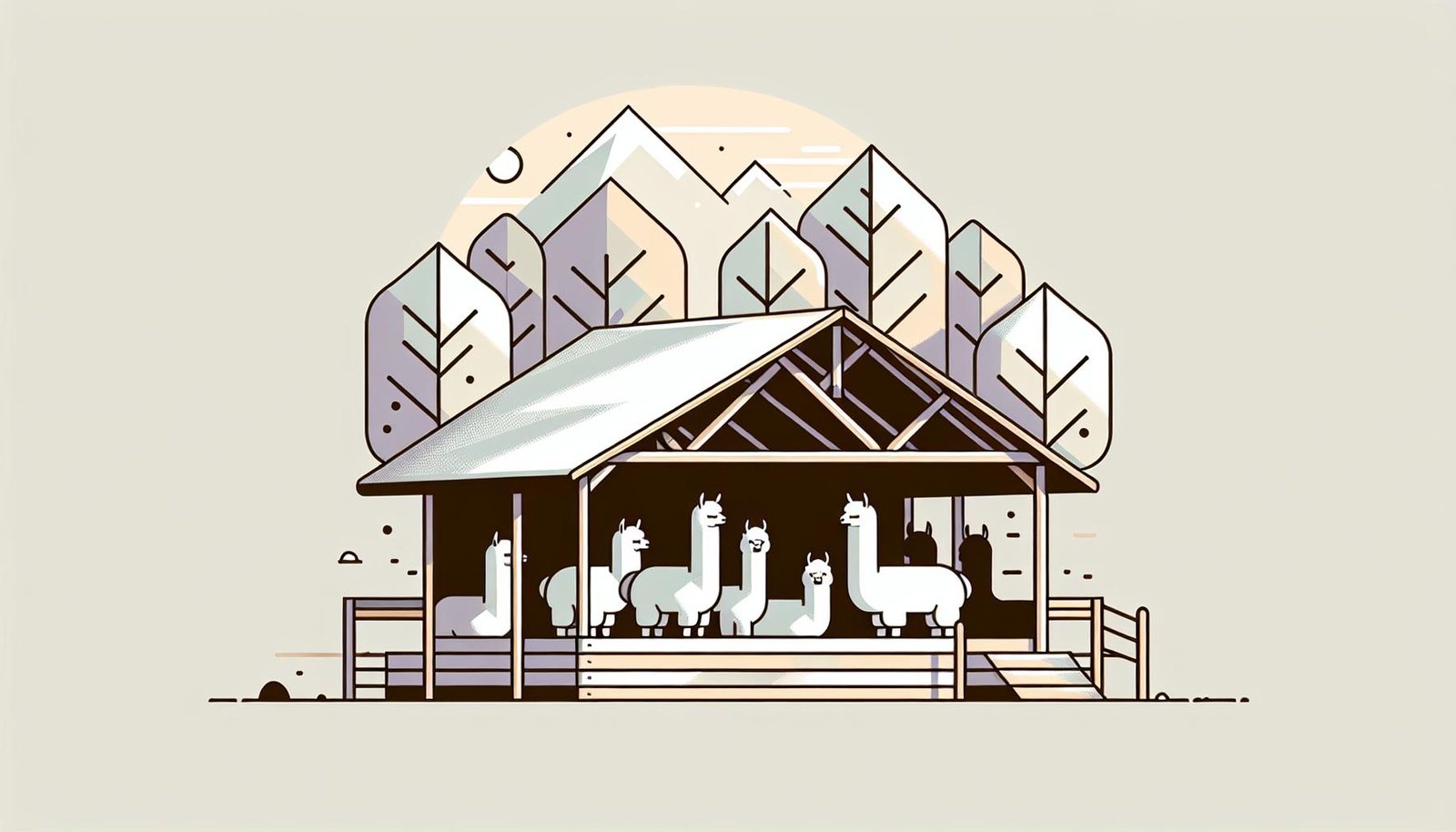
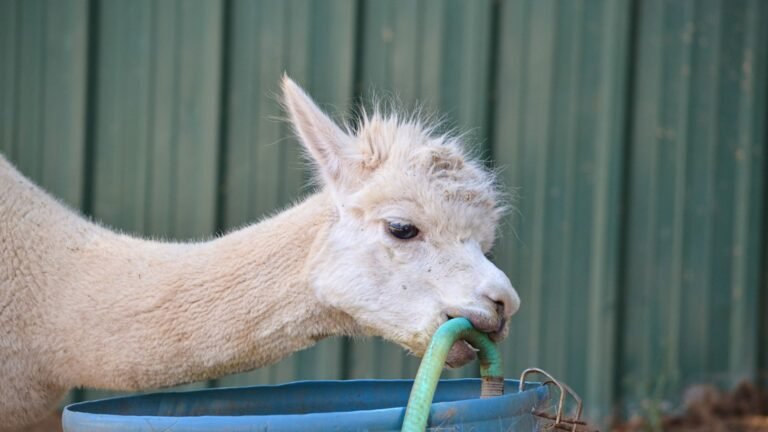




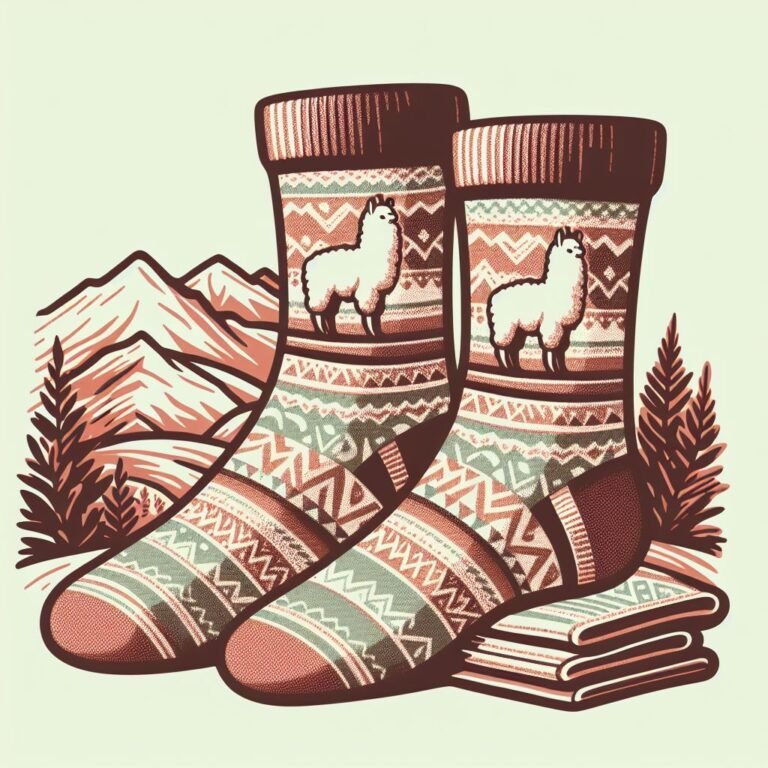
One Comment
Our picks
Alpaca & Wool Felted Sole Inserts: Comfy Upgrade?
Best Alpaca Socks for Hiking: Ultimate Comfort and Durability on Trails
Best Alpaca Halter for Comfort and Control